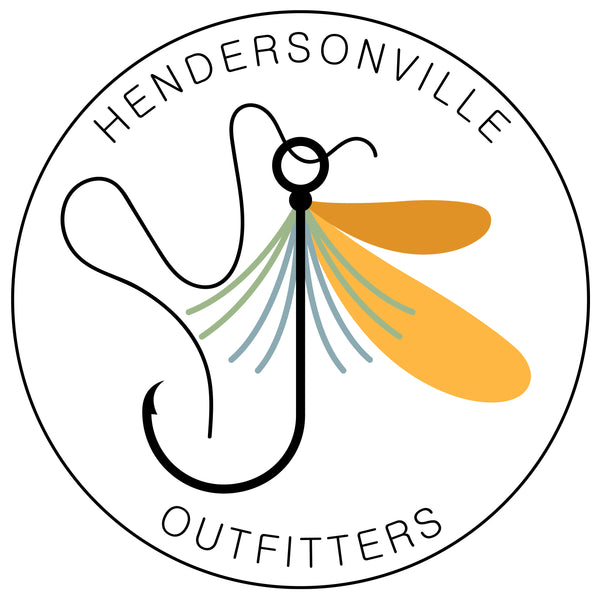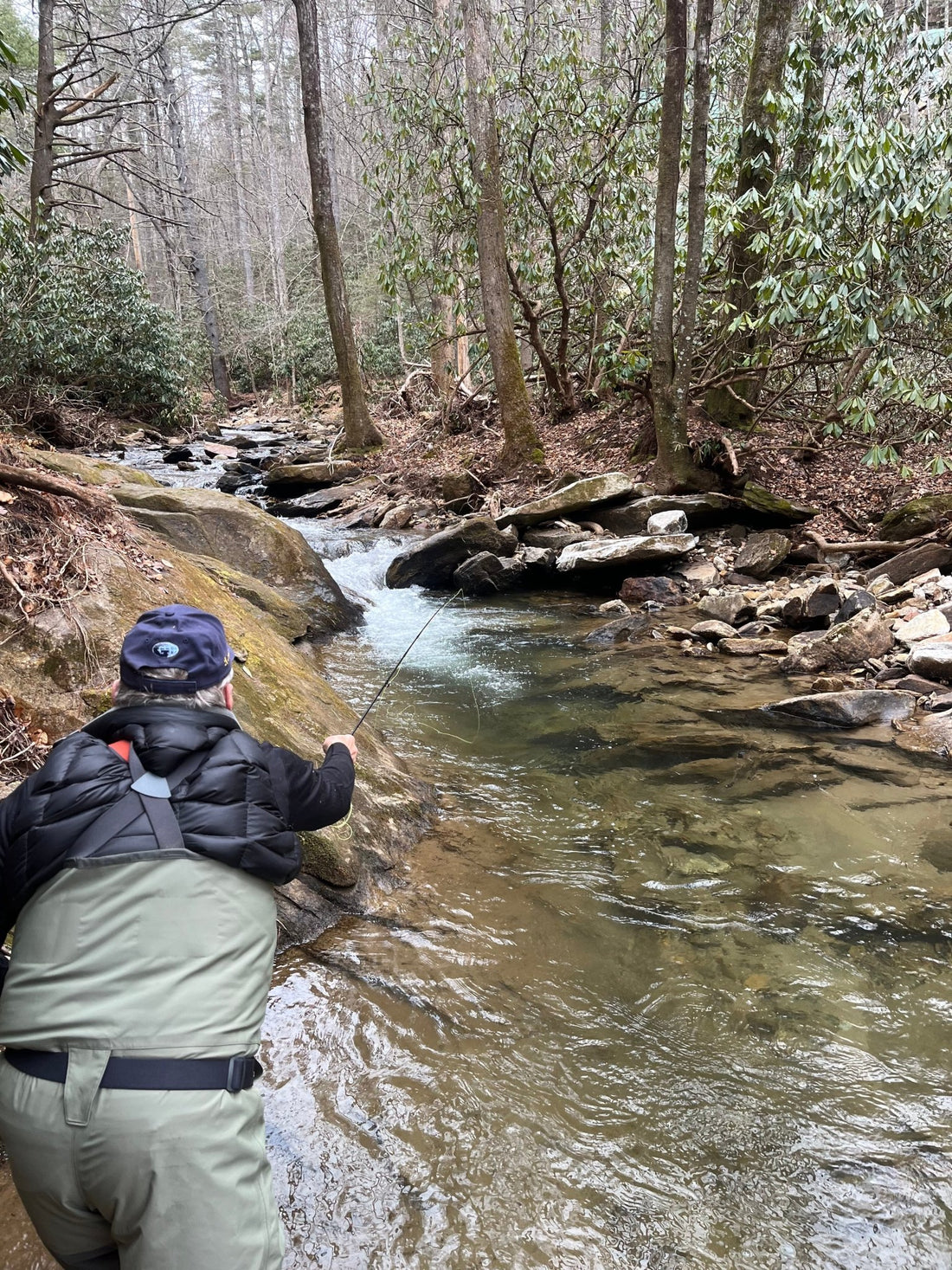Every day, we get inquiries from folks who assume our trout streams are destroyed after Helene in September. The simple answer is no. Some tail waters are still in rough shape, but our trout streams of the hollers and hills that we are famous for are adept to change; after all, this is nature we are talking about. Nature has an incredible way of refreshing the land. Unfortunately, we humans and our structures are the casualties of that. As delayed harvest approaches, we have a lot of concerned anglers who just need some interpretation. I am here to give you some of that and explain why these things many anglers see as a problem actually have benefits to our fisheries.
Downed Trees in the River
This is probably the one concern I hear about the most, but these big trees create breaks in the current and cover for fish and invertebrates that protect them from predators and help them get out of a swift current when needed. Trout love logs, the ultimate housing unit that nature provides for them. These downed trees have already been helping pressured tired fish in our popular streams catch a break, and dollars for donuts there will a be a big ol brown trout under a log jam you encounter. They are also a great chance to get your streamers out. Getting upstream of a log jam and swinging a streamer underneath it can be an exciting experience, hoping there could be a monster living in there.
Deeper Wider Holes
For quite some time, a lot of sediment has made big sand bars and shallow riffles in places they shouldn’t be. This big clean-out from the flooding has moved a lot of that away and made holes twice the size.
Once again, these deep eddies create a good place for fish to digest after battling the current to eat invertebrates washing through. Fish use water depth as cover, and often there will be some sitting at the bottom of these holes.
Longer Runs
Most of the runs we could only get a 20-foot drift on are now even longer. This means more fish can feed in one run at a time without fighting for territory. You can spend time at one 50-foot run and work it hard, expecting that there will be multiple opportunities to get a hook-up. You can enjoy long drifts that can keep that fly in the strike zone for an extended amount of time. Fish can be sitting in the back, right in the middle, or in the front with confidence that everyone will get something to eat.
River Geography
Yes, a lot of your old spots look different now, but that is just inconvenient to you, not a trout. Instead of being upset your honey hole is different or nonexistent now, you can explore new and what could be even more productive spots. Things stay exciting as you get to learn your favorite stream again. This experience can be magical and full of surprises. One might even stumble upon an untouched run that hasn’t had time to build a reputation. You can really take your time and experiment in new runs and deeper holes.
Time moves on, and rivers will change, but we are pursuing instinctive beasts of nature that are much more adaptable than us. Take this opportunit to explore your favorite streams and see where these new features are. It’s going to be a great season. Spring is on the Horizon, and the possibilities are endless. Now go fishing.


